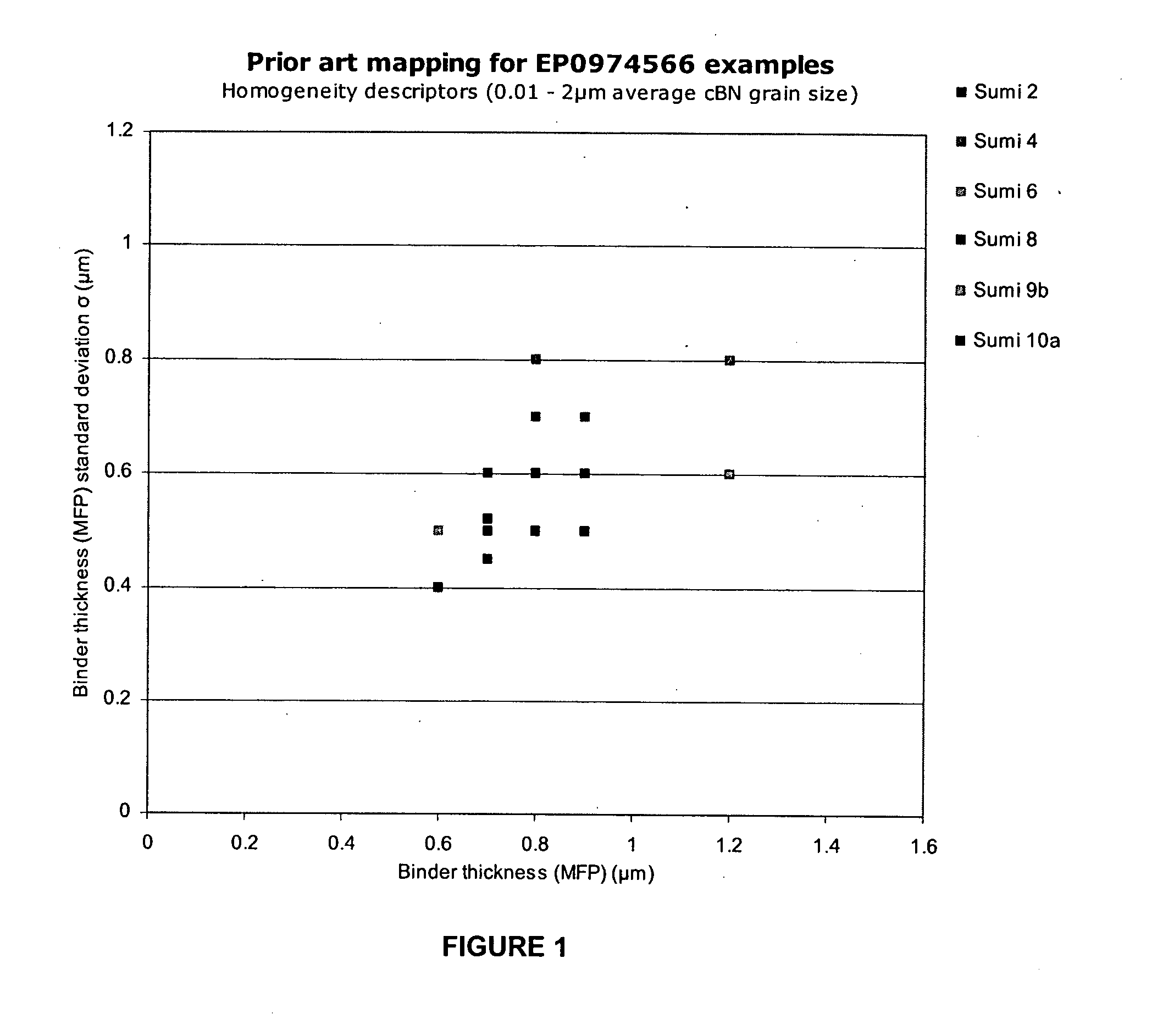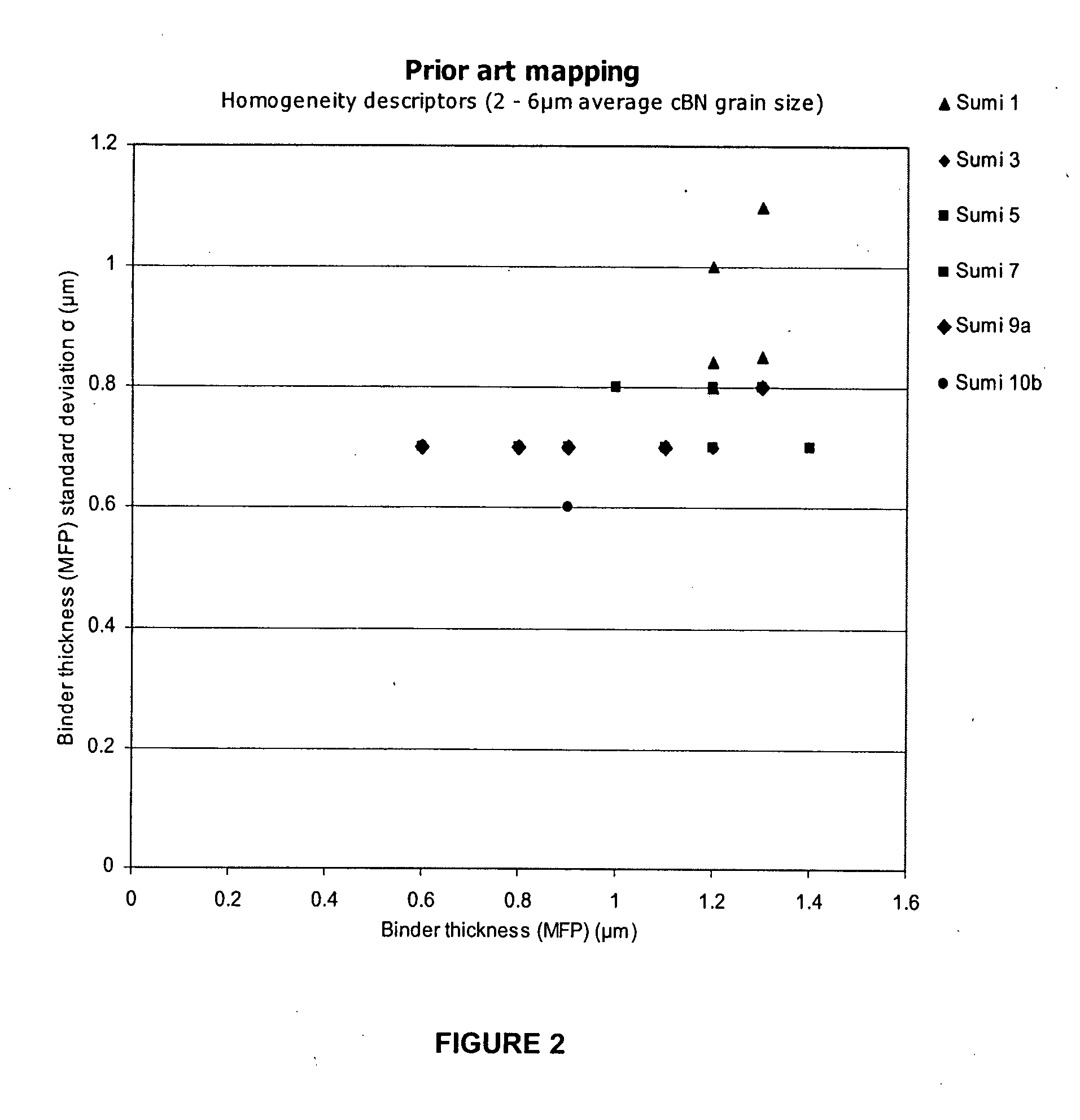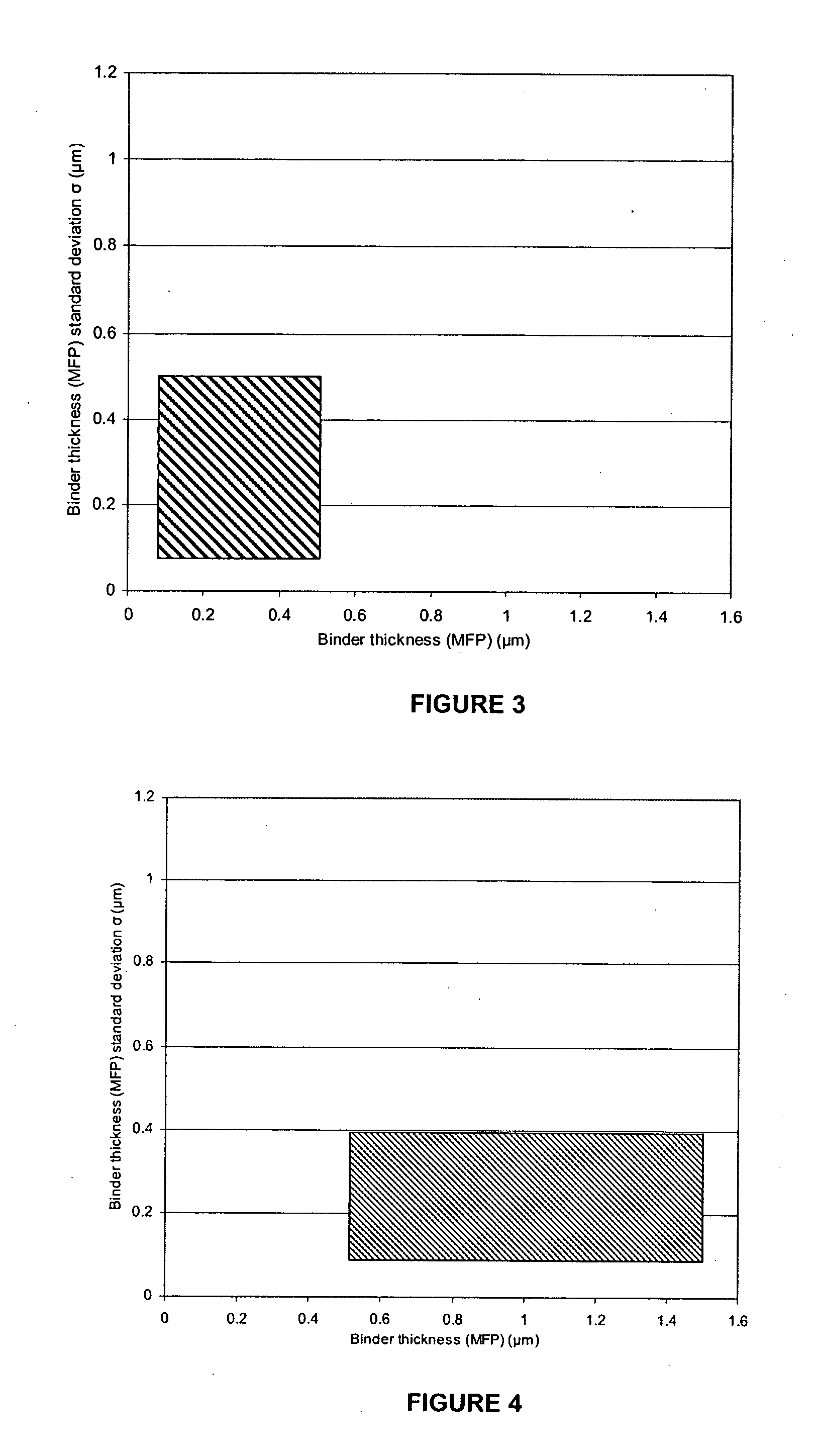Polycrystalline abrasive compacts
- Summary
- Abstract
- Description
- Claims
- Application Information
AI Technical Summary
Benefits of technology
Problems solved by technology
Method used
Image
Examples
example 1
[0053] 100 g of cubic boron nitride, of average particle size 1.3 μm, was cleaned in HCl to remove surface contamination. As taught in Internation Patent Application PCT / IB2005 / 002799, the cBN particle surfaces were made vitreophilic. 53.7 g of cBN was then suspended in 700 ml of pure ethanol in a beaker. The suspension was ultrasonicated for 20 minutes, using a large horn (diameter 40 mm) at sufficiently high power to deagglomerate the cBN particles. The suspension was then vigorously stirred with a paddle stirrer at about 100 rpm.
[0054] 50 g of tantalum (V) ethoxide liquid, Ta(OC2H5)5, was dissolved in 75 ml of anhydrous ethanol. After allowing the cBN suspension to cool to room temperature (post-ultrasonification), the Ta(OC2H5)5 was added drop-wise to the cBN suspension over a period of 2 hours. 35.25 g of titanium iso-propoxide liquid, Ti(OC3H7)4, was then dissolved in 75 ml of anhydrous ethanol and added dropwise to the cBN suspension over an additional period of 2 hours.
[00...
example 2
[0059] Cubic boron nitride with an average particle size of 1.3 μm was acid-treated as described in Example 1. 250 g of the acid-treated cBN powder was suspended in 2000 ml of pure ethanol. This cBN suspension was ultrasonicated with a large horn ultrasonic probe (40 mm diameter) for 20 minutes, to deagglomerate the cBN particles, followed by vigorous mechanical stirring with a paddle-type stirrer (100 rpm). It was then allowed to cool to room temperature before proceeding. 221.7 g of zirconium (IV) n-propoxide (70% w / w in n-propanol), with the chemical formula, Zr[O(CH2)2CH3]4, was dissolved in 200 ml of dry ethanol. The alkoxide solution was added to the stirred cBN suspension, at room temperature, drop-wise over 2 hours.
[0060] In a separate dropping funnel, 7.4 g of yttrium nitrate hexahydrate, Y(NO3)3.6H2O, was dissolved in 150 ml of dry ethanol. After the addition of the zirconium n-propoxide the Y(NO3)3.6H2O was added to the cBN suspension over a period of 1 hour. This was fo...
PUM
| Property | Measurement | Unit |
|---|---|---|
| Time | aaaaa | aaaaa |
| Thickness | aaaaa | aaaaa |
| Thickness | aaaaa | aaaaa |
Abstract
Description
Claims
Application Information
 Login to View More
Login to View More - Generate Ideas
- Intellectual Property
- Life Sciences
- Materials
- Tech Scout
- Unparalleled Data Quality
- Higher Quality Content
- 60% Fewer Hallucinations
Browse by: Latest US Patents, China's latest patents, Technical Efficacy Thesaurus, Application Domain, Technology Topic, Popular Technical Reports.
© 2025 PatSnap. All rights reserved.Legal|Privacy policy|Modern Slavery Act Transparency Statement|Sitemap|About US| Contact US: help@patsnap.com



